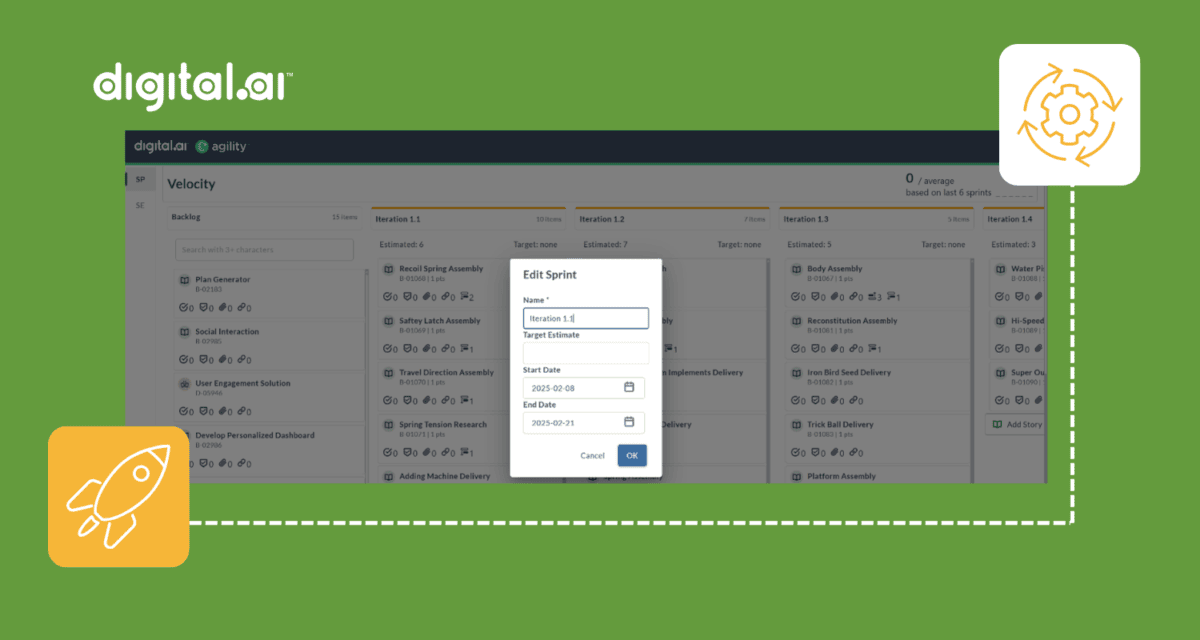Table of Contents
Related Blogs
The global pandemic has made digital transformation imperative. Businesses are looking for technology to facilitate remote work and collaboration, and doubts about the necessity of digital transformation to business longevity have been silenced.
Before anyone had ever heard of COVID-19, businesses across the globe saw digital transformation as important but not imperative. By the year 2020, most businesses had migrated at least some of their sales, operations, or marketing activities to digital platforms. These efforts did not represent a wholesale commitment to a complete (or near-complete) transition. A 2018 survey conducted by Tech Pro Research found that only 70% of companies had a digital transformation strategy in place or in-process; paper-reduction was listed as the predominant motivating reason by most companies.
Now, we live in a very different world. The same survey cited above was re-conducted in Q2 2020, and respondents showed an overwhelming shift in priorities. Developing technology to facilitate remote work and collaboration became the biggest reason for digital transformation. 39% of respondents reported a shift towards IT and business process automation. 47% said they planned on spending even more on digital transformation efforts in 2021.
What changed? Beyond the obvious answer of “a pandemic,” the biggest reason is that once-murky questions about the purpose and strategy behind digital transformation became crystal clear. Goals were set to introduce new digital capabilities as quickly as possible; waiting often meant work simply could not be done!
The need for collaborative tools and upscaled digital sales/engagement platforms emerged within the span of just a few short weeks. Business leaders who had projected digital transformation strategies that spanned over the course of years found themselves being asked to make things happen (sometimes literally) overnight.
Research from McKinsey showed that COVID-19 forced the adoption of digital customer interactions at a pace on par with three years of advancement in a few months.
One globally leading accounting and consulting firm accurately said, “if there were any lingering doubts about the necessity of digital transformation to business longevity, the coronavirus has silenced them.”
With a new mandate and strong motivation to transform, businesses can look to models of strategic success set by others. These models include value stream management (VSM) methodologies, which can allow them to correct course and control outcomes, achieving business goals more consistently using the lens of value creation.
Burning platform? Try a vanishing one
The most immediate effect of COVID-19 was that many organizations found themselves completely unable to conduct business the way they had done for years — sometimes decades or even centuries — within the span of just a few days. In light of the situation, some harkened back to the classic business coach image of a burning platform.
But a burning platform implies an urgent need to leap from one way of doing things to the next. In this scenario, the platform simply fell out from underneath our feet. Now, many businesses find themselves in dire need of a way to stop the freefall.
Luckily, the blueprints for a safety net — in the form of methodologies that aid in digital transformation success — already existed. These included agile process frameworks; nimble and independent-but-connected teams; technologies that facilitate rapid communication and collaboration; and data systems capable of reading situations in real time and revealing key insights through a single source of truth.
With this blueprint in hand, many organizations set to work furthering their digital transformation initiatives — or getting a late start. According to a survey published in Forbes:
-
97% of executives say the pandemic sped up their digital transformation
-
95% say they’re looking for new ways to engage customers
-
79% say COVID-19 increased budgets for digital transformation
Clearly, the disappearance of traditional business platforms has spurred business leaders to make dramatic changes in order to survive.
More organizations embracing value stream management in light of COVID-19 disruptions
As work and communication move remotely, business organizations need systems in place to ensure teams aren’t just working together but working towards a common, functional goal.
A value stream management (VSM) platform can keep product teams focused on improving their products in a way that will move the needle on the most important value-indicating KPIs.
For example, agile product feature teams may be dramatically rearranging their user story queues based on the most immediate needs. With a VSM platform, they can better understand what stories have the highest potential to contribute value to customers, end-users, and the company’s overall bottom line. They can also track what stages of work have the largest effect on value creation — both positively and negatively.
With a VSM dashboard monitoring product workflows from end to end, including in production, developers don’t need a product manager explicitly telling them to work on a specific user story in the queue; they can identify that story based on current trends or needs. Teams can benefit from metrics generated from their work to see the progress they’re making and whether they need to correct course. From the perspective of higher-up managers, they will have visibility of measurable value delivery, instilling trust while enabling risk management — without the need for micromanaging teams.
Insights displayed on a VSM dashboard are generated by leveraging data from key systems of record. Environments like Digital.ai Release track work metrics as team members perform specific tasks, and this data is imported directly from the developer tools into an analytics platform. Data can be aggregated across workflows, ensuring apples-to-apples comparisons and a complete, unskewed view of how key metrics like cycle time fluctuate across work processes. All of this information is displayed in actionable dashboards, which provide clear representations of KPI performance and trends to all stakeholders. These stakeholders, which can include scrum leaders as well as top-level executives like the CMO, can monitor value delivery to customers and the flow of value through each team and task.
VSM technology has the global effect of aligning everyone behind common goals while enabling proactive innovation to deliver more value. Teams with this level of visibility are not just responding to demands for change, but deliberately choosing change based on current opportunities. Subtle trends, like a rise in user loads as a result of increasing adoption of a specific tool, can be met with action to proactively improve performance or prevent performance degradation in the production environment.
In the era of COVID-19, where consumers demand immediate, transparent, completely digital solutions, business leaders literally cannot afford to provide excuses for digital product failures. They can’t throw their hands up when events like supply chain disruptions occur and there are no answers as to when a resolution will come. Modern businesses need proactive solutions to problems like these. They also need the nimbleness to respond to emerging market conditions, and they want to be able to depend upon a corporate culture built around succeeding under pressure rather than dreading it.
To be clear, the goal is not to frame the pandemic as an unexpected positive; it is merely a catalyst for changes whose necessity only became apparent in recent months. COVID-19 will have drastic negative after-effects felt for years, including a staggering death toll. Worst of all, households who entered the pandemic at a financial or social disadvantage are suffering the most through it.
Within this challenge, many organizations are finding the ideas and tools they need to continue thriving and delivering customer value within agile, VSM, and digital transformation. We’re finding out that we can depend less upon traditional office work, and instead rely on collaboration and communication tools that allow us to work together even when miles apart.
As the world becomes more volatile and more uncertain, our ability to respond to challenges with not only digital solutions but cultural ones will dictate our survival, as the bounds of human limits are tested further than we ever imagined.
Businesses are being told: Go agile or go extinct
Demand increased for not only new tools and technology but also new ways of distributed working and digital value delivery. This includes physical products with business models that may have never even had a single digital touchpoint. For example, west-coast juice bar chain Nekter developed a semi-proprietary mobile ordering system with limited contact pickup, and sales have been up while labor costs are down.
Many organizations are finding that existing digital tools can’t provide enough functionality on their own. Teams physically cannot do a Zoom call every time there’s confusion or a need to communicate. Otherwise, employees are spending hours in Zoom just to determine what work needs to be done before a single productive keystroke is made. Existing planning tools like Digital.ai Agility are beneficial for tracking work strategy, but they aren’t enough to align teams on their own. What is needed are systems put in place to allow work to be conducted independently while working towards a common goal.
Agile methodologies, like VSM, encourage this practice, helping teams deliver results with minimal direction. Modern business teams need people capable of problem solving and following work through to completion, even if it’s not part of their original job description. This is giving rise to agile team formation, bringing together people with diverse talents to perform work without the need for constant supervision and direction.
“Companies are often being forced into cross-functional teaming in order to provide a unified and rapid response across the organization,” professes Deloitte, “and those teams are increasingly being given greater autonomy out of sheer necessity.”
Business leaders can’t plan projects ahead for the next 6-10 months when we don’t know what those months will look like. Instead, we have to work in iterations and sprints in order to achieve quick progress, measure our results, and devise the best way to continue in light of data feedback.
The current environment embodies a McKinsey agile principle listed in an article published way back in 2018: “We live in a constantly evolving environment and cannot know exactly what the future holds. The best way to minimize risk and succeed is to embrace uncertainty and be the quickest and most productive in trying new things.”
As prosaic as that sounds, McKinsey wasn’t predicting the future; they were merely reading the writing on the wall.
If you are planning on or have implemented agile digital transformation in your organization then share your experiences with us. The State of Agile survey is the largest and longest running agile survey online. We’d love to hear from you.
Are you ready to scale your enterprise?
Explore
What's New In The World of Digital.ai
Digital.ai and Packaged Agile Partner to Help Enterprises and Agencies Reclaim the Value of Agile
Digital.ai and Packaged Agile: A Strategic Partnership That Reconnects Agile Delivery with Real Business & Mission Outcomes to be More Efficient & Effective
Plan, Execute, and Measure – All in One Environment: Digital.ai Agility 25.0 Feature Announcement
Discover what’s new in Digital.ai Agility 25.0 – updates to Rooms 2, OKR management, and more!
Better Together: Unlocking Endless Possibilities For Our Customers
This Valentine’s Day, join us in celebrating the unique stories that make our Digital.ai customers special!




